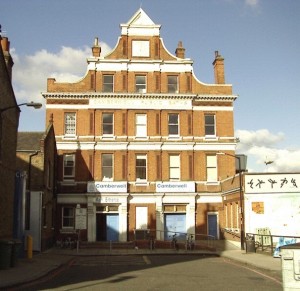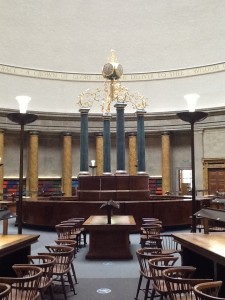In this month’s Building Design column I mull over the idea that we used to take the amenities and facilities in our towns and cities for granted. Now some survive, most are struggling but some have sprung back to life, spurred on by local effort. I enlist an eloquent cheerleader, the late Sue Townsend, who wrote, with suitable defiance, in the Observer in 2005 that “I’m a child of the municipal. Everything good had this word carved above its grand entrance.” In Leicester, where she was born and lived all her life, “there were municipal libraries, majestic solid buildings with beautiful entrances, windows and doors, oak furniture and bookshelves. Then there were municipal baths, which had a swimming pool and what were called slipper baths – private bathrooms for those without baths and hot water at home…There were municipal parks, which were delightful places in which to take the air. A brass band played on summer evenings…”.
Shared local pride, immediately tangible in decent amenities, quality communal facilities and congenial neighbourhoods, was not, for her (or me) a dose of sterile nostalgia but a wake-up call. Like the busy blogger Municipal Dreams, she was capturing the ubiquity and quality of good municipal provision.
If municipal pride was sometimes flawed, more often it was magnificent. Take the remodelled Manchester Central Library, the dome covering the intact but now acoustically transformed central reading room still belted tightly by a band of lettering, conveying the resounding words from Proverbs, “wisdom is the principal thing; therefore get wisdom: and with all thy getting get understanding.” Vincent Harris’ 1934 exercise in (mostly false) grandeur is now afloat in a skein of interwoven levels and functions, a working by Ryder Architects that includes everything, and more, that might be expected from a state of the art public library. That makes two expressions of civic grandeur, eighty years apart, but still under one roof.
Here, as in the newly rebuilt libraries in other major cities, Newcastle, Liverpool, and Birmingham too, a shift is signalled but not a change of direction. Considerations of public accessibility and shared values have been recast, with communal organisations and charitable trusts shouldering their share of the responsibility and drive, alongside the local authorities.
In Southwark the swimming pool (and adjacent sports hall) in Camberwell (see at the top of the piece) has recently been magnificently transformed after a local campaign group secured extra funding through the Olympic Legacy programme. With its proud foundation stone (1891) listing all those who were responsible for setting up and building the Camberwell Public Baths, it’s now a monument standing equally for Victorian civic pride and 21st century communal energy and imagination.
British city authorities now distance themselves from the heavy-footed civic paternalism that so easily shaded into autocracy. Yet the saga of the Red Road tower blocks is a useful reminder of the hubris lurking in the shadows. Fifty or so years ago Glasgow, in common with most other major cities, dealt with its monumental housing and transport problems with a series of ‘swift and gigantic solutions’ in Ian Jack’s neat phrase in the Guardian. What he terms ‘misplaced civic grandeur’ was the driving force behind the construction of the Red Road blocks, springing from the same arrogant mindlessness that suggested that their demolition on a world stage in front of billions of viewers might be an appropriate popular spectacle.
Bull-headed certainty drove the idea (now scuppered) that the combustion of many hundreds of recently vacated working class homes would be a televised global cultural happening – a sort of vacuous version of London 2012 and Pandemonium re-imagined for the 2014 Commonwealth Games. The last minute change of heart, a response to immense local outrage, is a sharp reminder that the very best municipal enterprises exemplified sustainable values even more than sustainable buildings.


 @gilliandarley
@gilliandarley @gmdarley
@gmdarley Gillian Darley
Gillian Darley